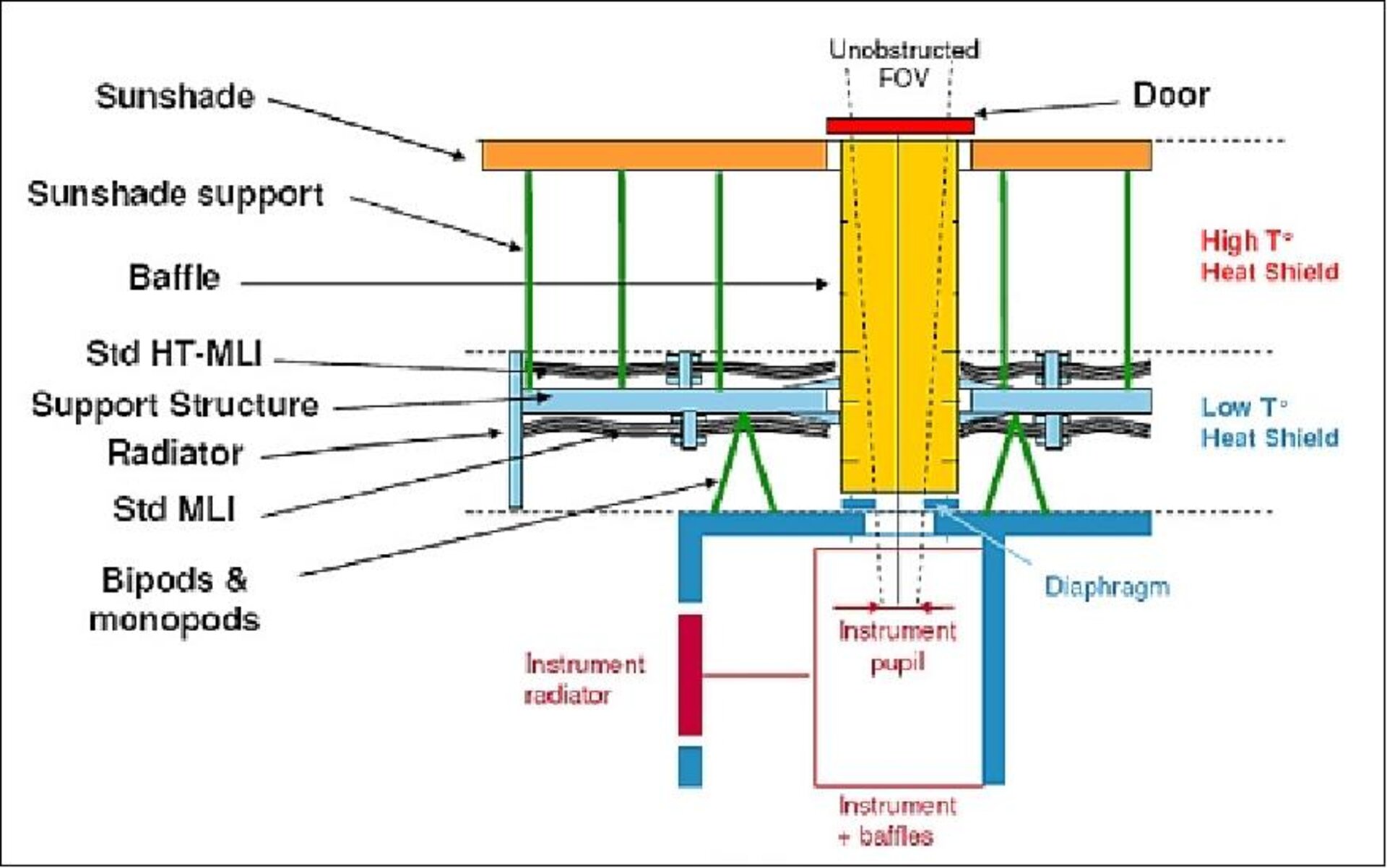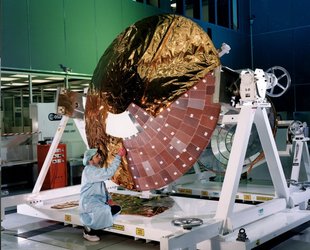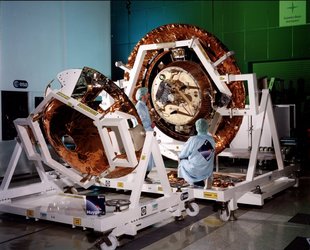

Heat shield design
Solar Orbiter's 3.1 m by 2.4 m heat shield starts with a thin surface layer of titanium foil just 0.05 mm thick – around the width of a human hair – is backed up by 18 layers of specially tailored titanium multi-layer insulation.
This surface layer is linked by titanium brackets across a 24.5 cm gap to an aluminium honeycomb support panel covered with high thermal conductivity carbon fibre skins and insulated by another 28 multi-layer insulation layers made of more standard space materials – comparable to the ‘space blankets’ used to keep runners warm after marathons – but still able to withstand 300 °C. The support panel is attached to the spacecraft by narrow titanium blades across a second 10 cm gap.
These multiple layers plus double gaps and thin supports are key to letting the majority of absorbed heat radiate out sideways into cold space, so that of the 110 000 watts of solar flux received by the front area of the shield, just six watts makes it to warm the main spacecraft structure.





